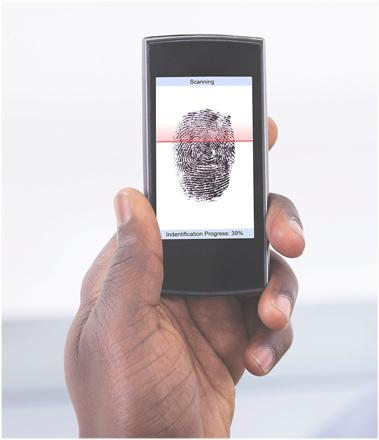You are here
The ideal personal identification
By Jean-Claude Elias - Dec 10,2020 - Last updated at Dec 10,2020
It was on several media channels this week. It was reported that back in May this year many Swedes had received chip implants inside their hand allowing them to be recognised by various digital systems, to effect payment or have access to restricted locations, without the need to bear any device (other than the implant), smartphone or card, or to go through a traditional fingerprint or a more recent iris scan.
France-based journalist Pascale Davies wrote: “Thousands of people in Sweden are inserting tiny microchips under their skin,[..they] are supposed to make daily life convenient. They open a perspective to replace traditional keys, cards, IDs” (https://eufactcheck.eu).
What is the ideal personal identification (PID) method? Is it available yet? If you put aside digital high-tech for a moment, the answer is yes, the method is definitely here. Actually, it has been here for a long, long time. It is simply when your relatives, friends, colleagues, acquaintances, or those who know you, recognise you, without having to explain why, just when they see you or hear you!
To qualify as ideal, a digital PID method must match this natural method.It must be easy, simple, immediate and fool proof. The world of high-tech is not too far from achieving this trick.
Of course, we first think of biometrics and of the various such systems introduced over the years, from the time-honoured fingerprints to iris scan. Voice recognition, face recognition, palm hand scan and even posture detection are also frequently used. The smartest schemes and devices try to optimise PID results by combining several of these biometrics. This ensures higher speed and improved accuracy.
An intelligent use of combined biometrics by using digital devices is nothing but the imitation of the natural way to infallibly recognise people (by relatives, friends, etc.). It does not take a rocket scientist to analyse and to understand that the others recognise you when they see your face or hear your voice. The senses play the role of detectors. The difficulty comes in making advanced digital electronics do the same.
In a world where online work and communication aredramatically increasing, an ideal digital high-tech PID is becoming a necessity. Because each biometric method has limitation, researchers are going for the above-mentioned combination of biometric systems. It is sometimes referred to as “biometric fusion” (Alessandra Lumini, University of Bologna, Italy).
Here again, imitation of life is the name of the game. It is possible to confuse a person with another for a few seconds, if spottedin a crowd, in poor light, or if you just hear their voice in a very noisy environment. But if you are given the possibility to see the face while at the same time hearing the voice, the chance for a mistaken identity is remarkably reduced. This is precisely what high-tech digital PID systems are trying to achieve. You just show up and/or say something, you even don’t touch anything (a critical point in these times of viral infection), and you are instantly identified.
Iris ID (irisid.com) has developed a“contactless, biometric time and attendance solution” that combines iris scan and face recognition. Speed, accuracy, and safety are guaranteed with the technology.
Reaching the ideal PID solution with digital high-tech one day soon is almost a certainty. Some scholars believe that it may become even smarter that human’s natural recognition and make less mistakes.
Related Articles
Despite growing implementation and acceptance of biometrical identification methods like fingerprints, palm prints, iris scan, voice recogni
Are passwords really out?
SAN FRANCISCO — It sounds like a great idea: Forget passwords, and instead lock your phone or computer with your fingerprint.












